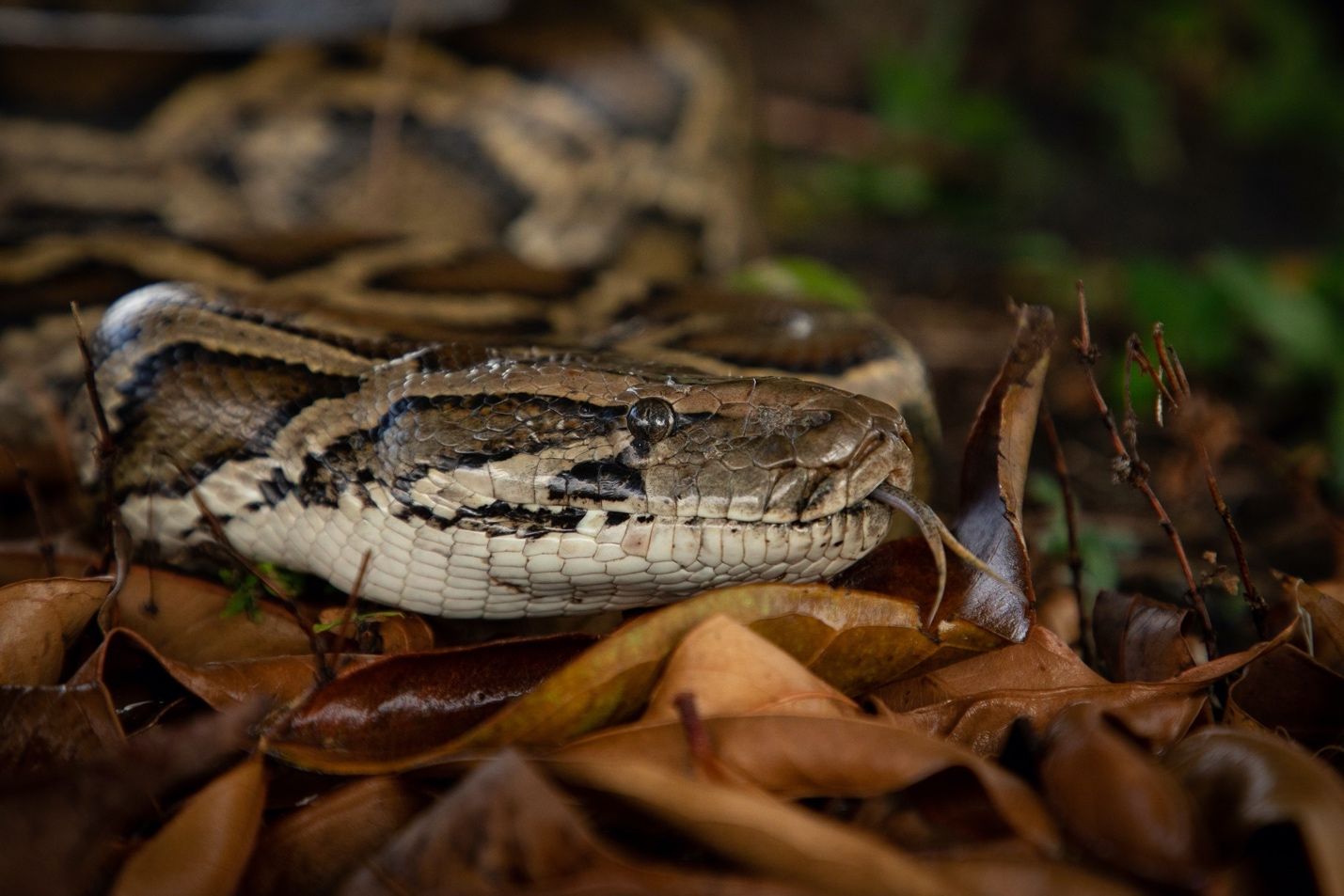
Credit: Justin Dalaba, UF/IFAS
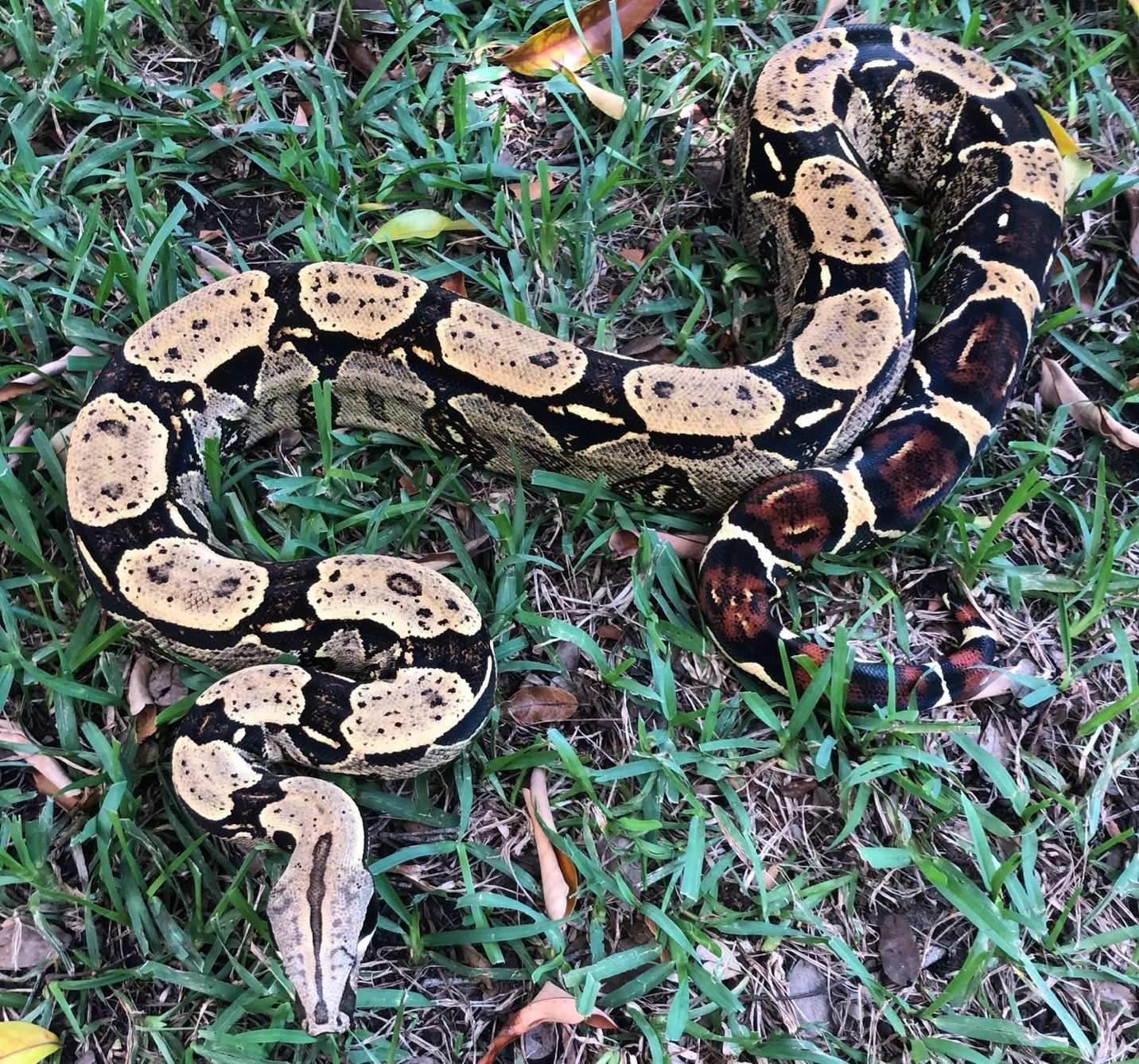
Credit: Mike Lloret
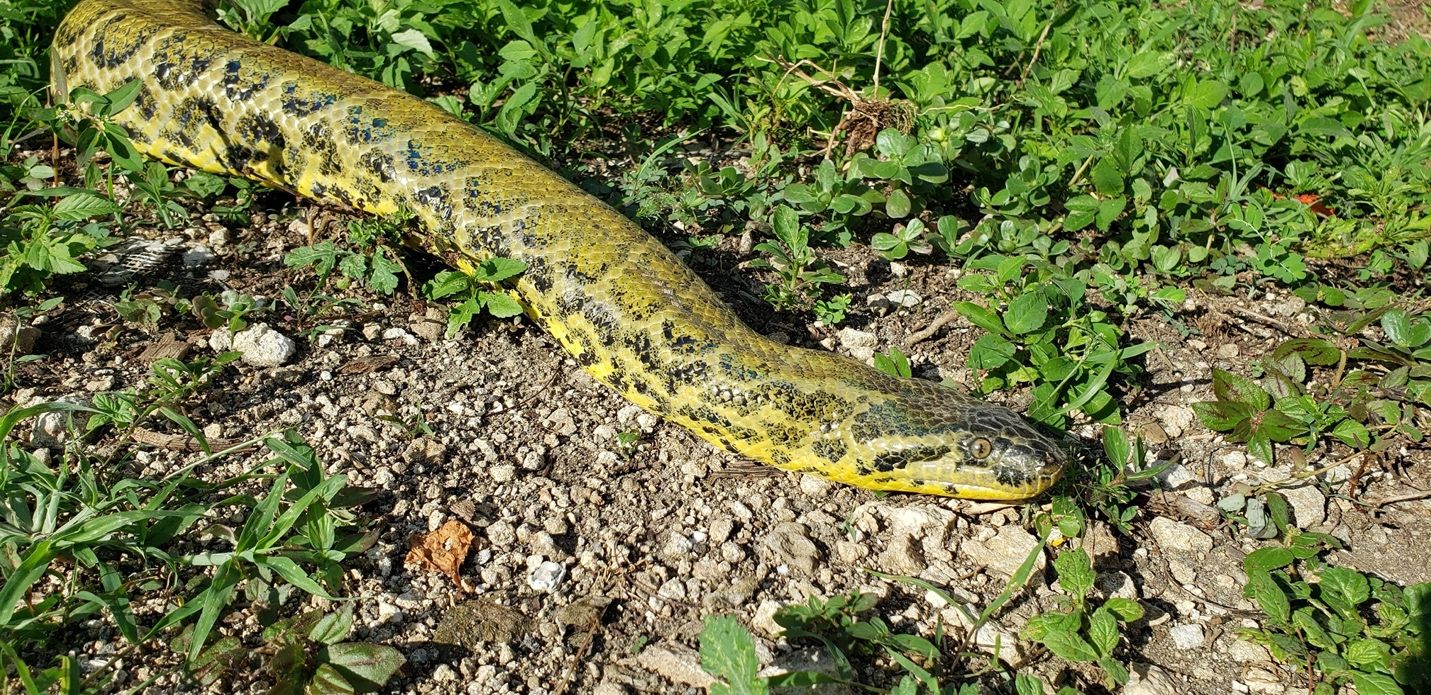
Credit: Jenna Cole, UF/IFAS
Introduction
Florida is home to 50 species of native snakes. Additionally, non-native snakes have been introduced and several have become established, including the Burmese python, which has been documented living in Florida since 1979.
This fact sheet serves as a guide to identifying non-native and native snakes of south Florida. The non-native species described here are constrictors, meaning they subdue prey by constriction rather than venom. Some are considered invasive species in south Florida, meaning they cause harm to the environment, economy, or human health, and many arrived through the pet trade. The Burmese python, Northern African python, and boa constrictor are all established invasive species in south Florida and may be expanding their ranges. Other non-native species found in the pet trade, including the reticulated python, ball python, green anaconda, yellow anaconda, and Dumeril’s boa may pose a threat to native species if they become established in Florida. We also include several native species commonly confused with non-native constrictors due to size, pattern, or disposition.
Use this guide to help differentiate between non-native and commonly confused native snake species. Immediately report sightings of any non-native snake to 888-IVE-GOT1. Native snakes can be found in every habitat. Some encourage healthy crops by reducing rodents and disease, and therefore do not need to be reported to this hotline. If you see a snake, it is best to stand back and observe it for distinguishing characteristics to determine if it should be reported.
Even if you are not sure what kind of snake you have found, it is important to take a clear photo, using your smartphone or other digital camera, and report it online to eddmaps.org. Be sure to crop or zoom in to aid in identification. Reporting helps managers understand existing threats and may even help prevent the establishment of a new invader.
Non-native Snakes
Burmese python
Python bivittatus, 10 to 20 ft (3 to 6 m).

The most widely established invasive constrictors reproducing in Florida, Burmese pythons can be found most commonly in south Florida but have been seen throughout the state. These constrictors are best identified by their light brown body with dark blotches that do not touch, resembling a giraffe pattern. Their belly scales are completely white.
Northern African python
Python sebae, 10 to 12 ft (3 to 3.5 m).
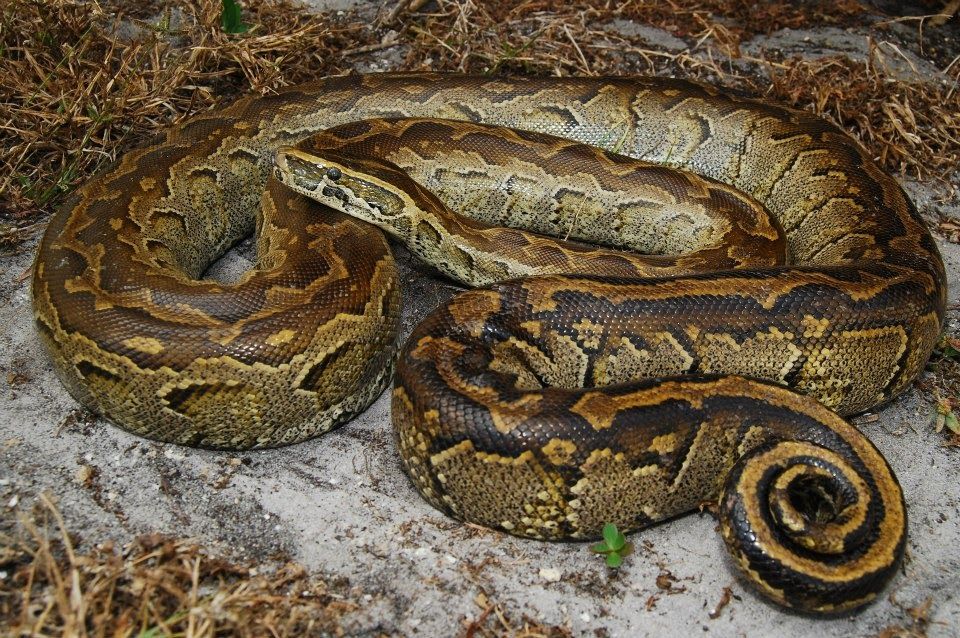
Credit: Mike Rochford, UF/IFAS
A localized breeding population is established in Miami-Dade County. These invasive constrictors have a lighter brown-gray body with irregular darker blotches that touch and run together, and their belly scales are mottled. They also curl their tails as a defensive posture.
Common boa
Boa constrictor, 6 to 9 ft (2 to 3 m).

Credit: Mike Lloret
Also known as the red-tailed boa, these snakes are invasive and known to be reproducing in eastern Miami-Dade County, but they can be seen throughout the state because they are commonly kept as pets. They are semi-arboreal with lighter tan ovals and a red-brown tail.
Ball python
Python regius, 2 to 4 ft (0.5 to 1.2 m).
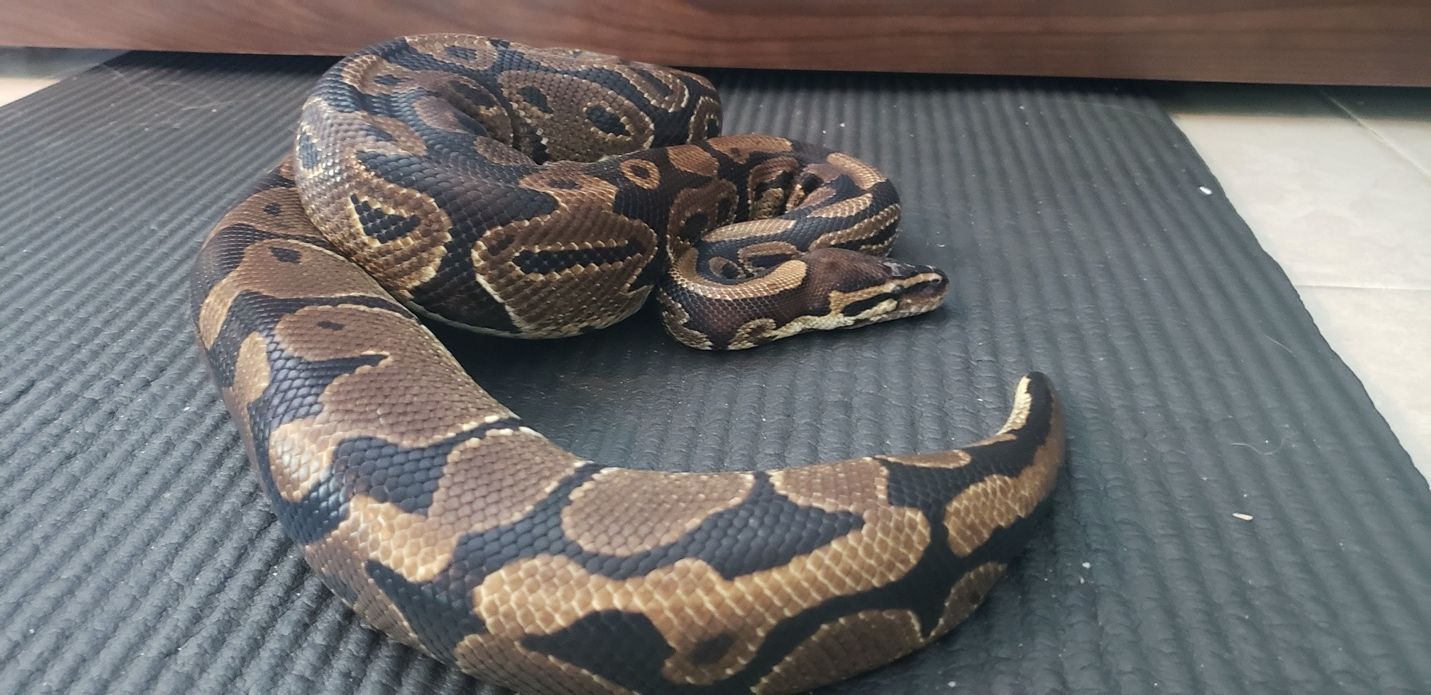
Credit: Jenna Cole, UF/IFAS
Not established, but common in the pet trade, these smaller constrictors have many variations. They tend to form a ball when threatened or in defense, and typically havelight rounded blotches on a dark brown-black body.
Yellow anaconda
Eunectes notaeus, 6 to 9 ft (2 to 3 m).
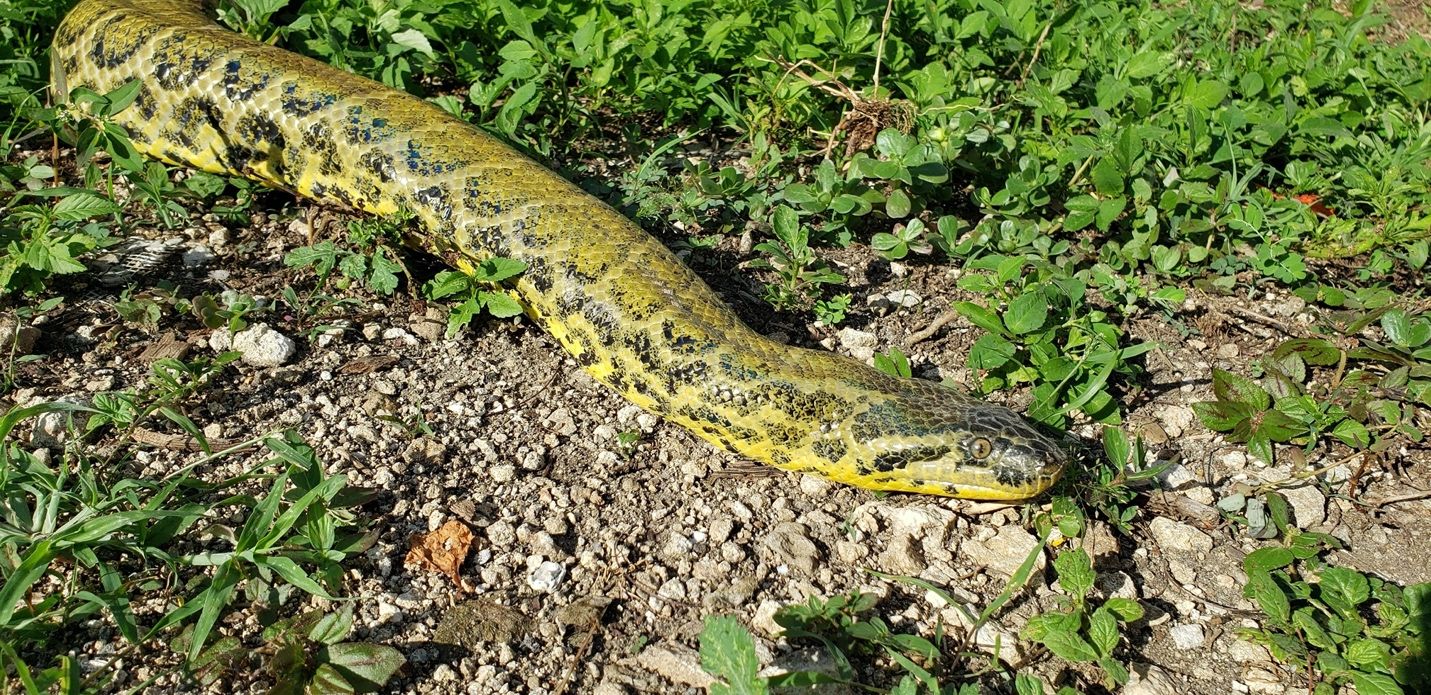
Credit: Jenna Cole, UF/IFAS
These snakes are not known to be reproducing, but a few verified sightings have been reported throughout Florida. They have a yellow-gold body with large dark spots, and five dark stripes on top of their heads.
Green anaconda
Eunectes murinus, 3 to 15 ft (4 to 4.5 m).
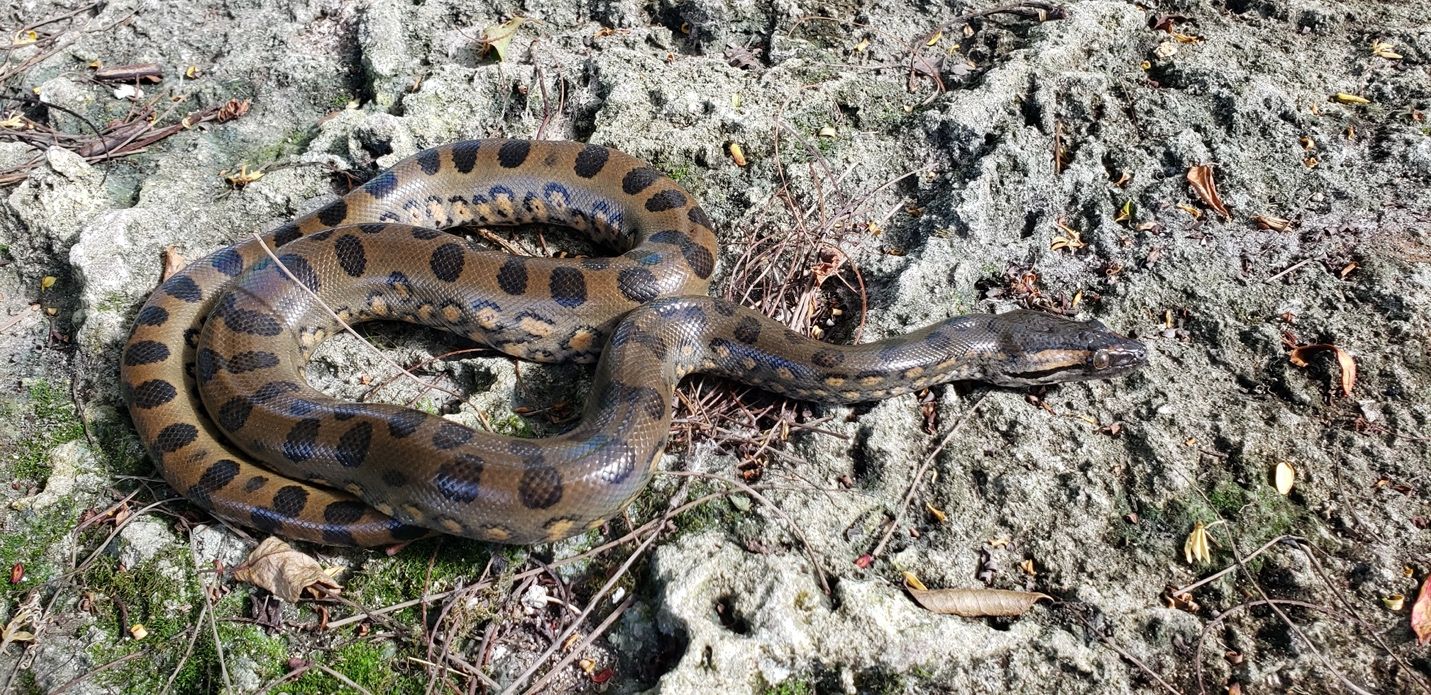
Credit: Jenna Cole, UF/IFAS
This snake is not known to be reproducing in Florida, but a few have been reported from as far north as Alachua County and as far south as Miami-Dade County. They can be distinguished from the yellow anaconda by their green-brown body with large round dark dorsal spots and a light stripe through the eyes.
Dumeril’s boa
Boa dumerili, 5 to 7 ft (1.5 to 2 m).
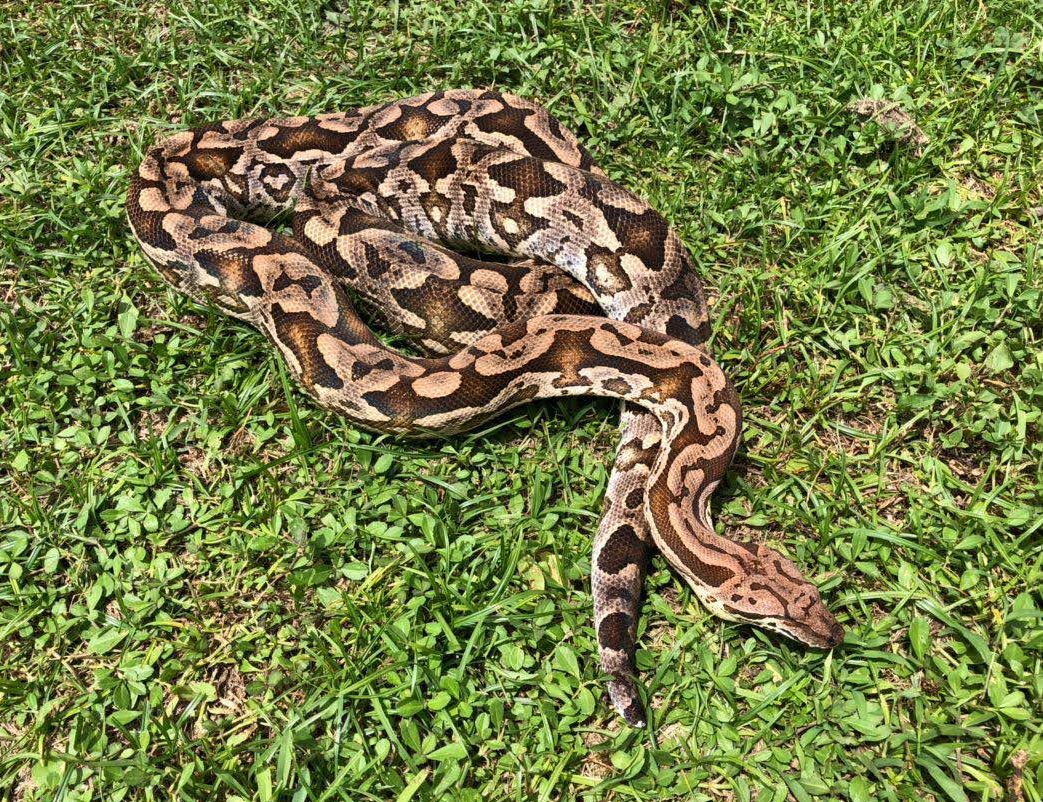
Credit: Savi Serrott
Not reproducing in Florida, but several have been found in south Florida, likely escaped or released pets. This non-native constrictor has irregular dark brown saddles that do not consistently connect across the back. It rarely grows up to 9 ft.
Reticulated python
Malayopython reticulatus, 14 to 18 ft (4.25 to 5.5 m).
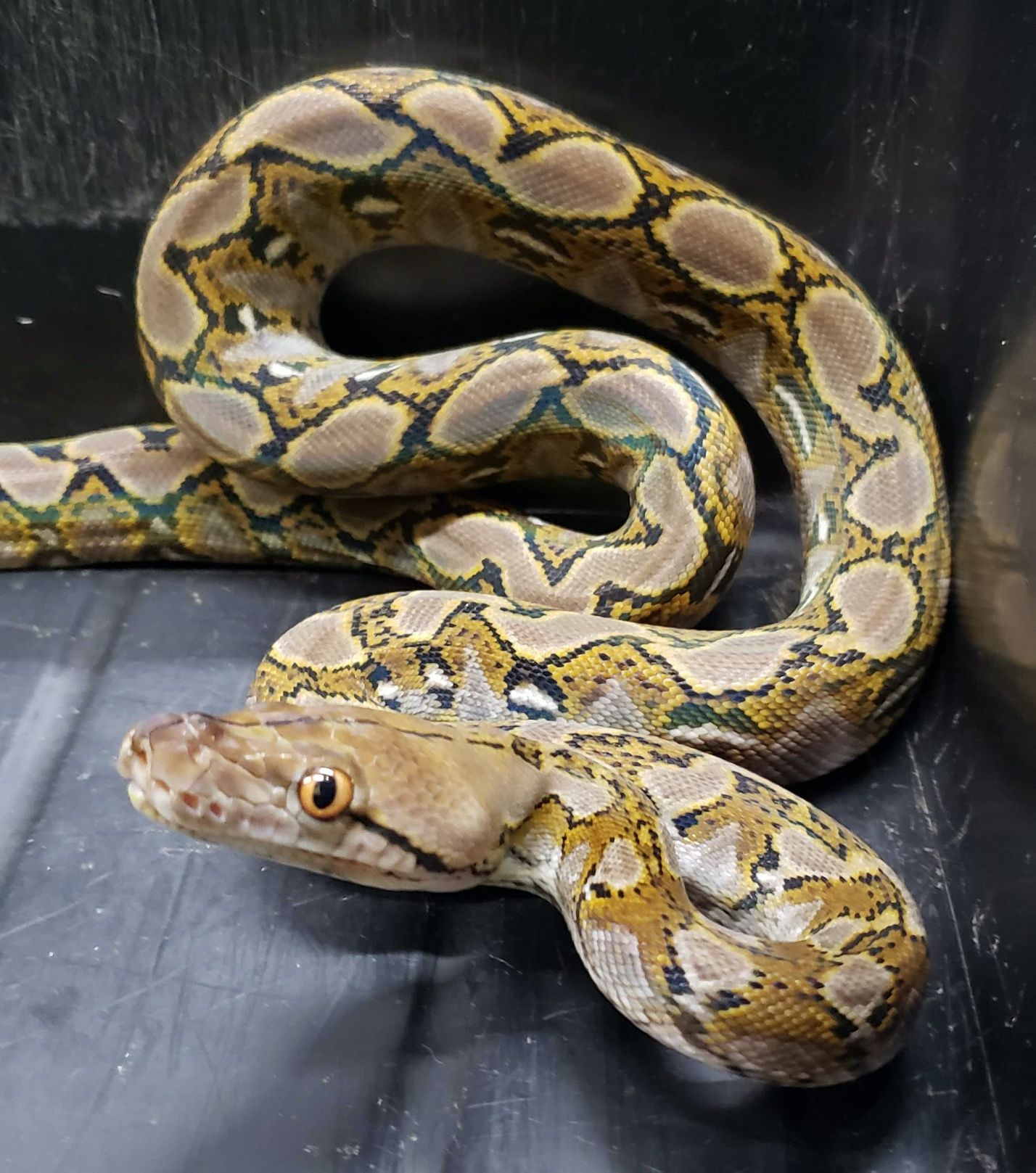
Credit: Jenna Cole, UF/IFAS
Not established in Florida, but there have been a few occasional sightings throughout the state and in south Florida as early as the 1980s. This large python is characterized by orange eyes. Their golden body is covered with tan blotches that are outlined in black with white and yellow accents.
Native Snakes
Cottonmouth
Agkistrodon piscivorous, 2 to 4 ft (0.5 to 1.2 m).

Credit: Justin Dalaba, UF/IFAS
These venomous snakes often engage in a mouth gaping display to warn off predators. Juveniles have abnormal light and dark brown bands, and adults can appear almost completely black.
Eastern diamondback rattlesnake
Crotalus adamanteus, 2 to 6 ft (0.5 to 2 m).
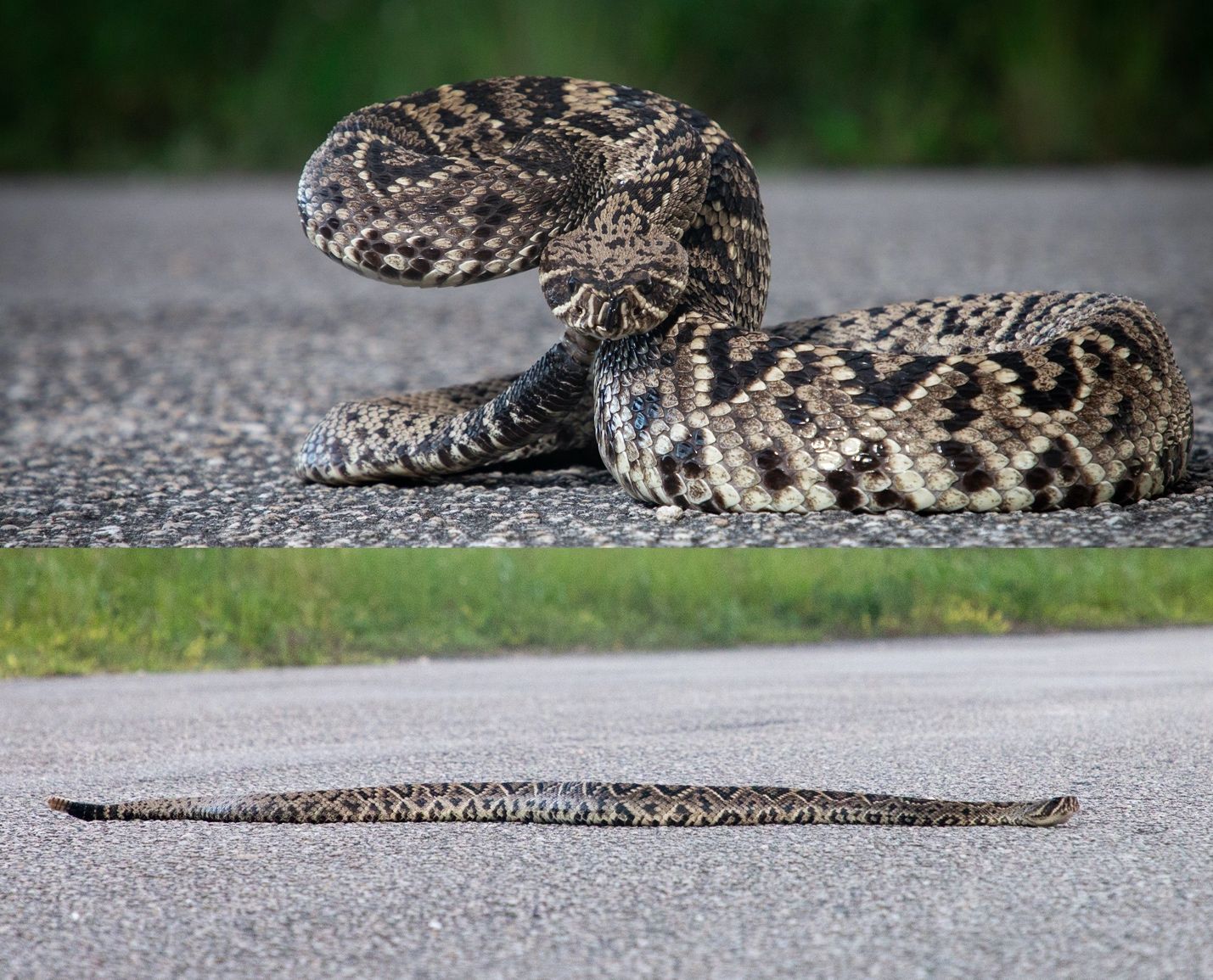
Credit: Justin Dalaba, UF/IFAS
Characterized by a diamond-shaped pattern on the dorsum and a thick diagonal band through the eye, this snake is venomous. Adults use an audible tail rattle in defense.
Eastern indigo snake
Drymarchon couperi, 5 to 8 ft (1.5 to 2.4 m).
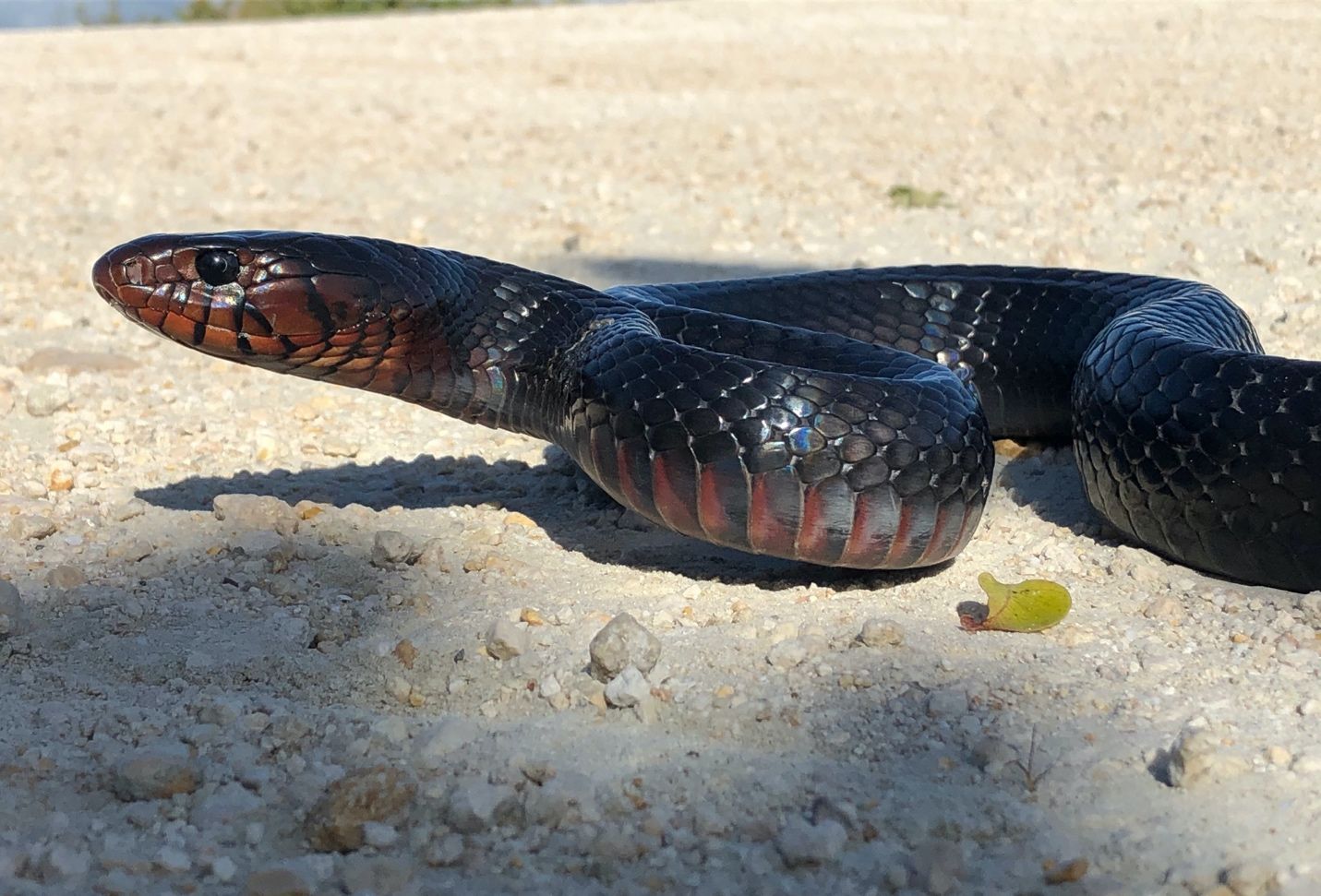
Credit: Mike Lloret
The largest native snake, indigos are non-venomous and often mistaken for other species due to their size. Their body is almost completely black, appearing more purple in bright light, and some have reddish coloration extending from their face to underside.
Banded water snake
Nerodia fasciata, 2 to 3.5 ft (0.5 to 1 m).
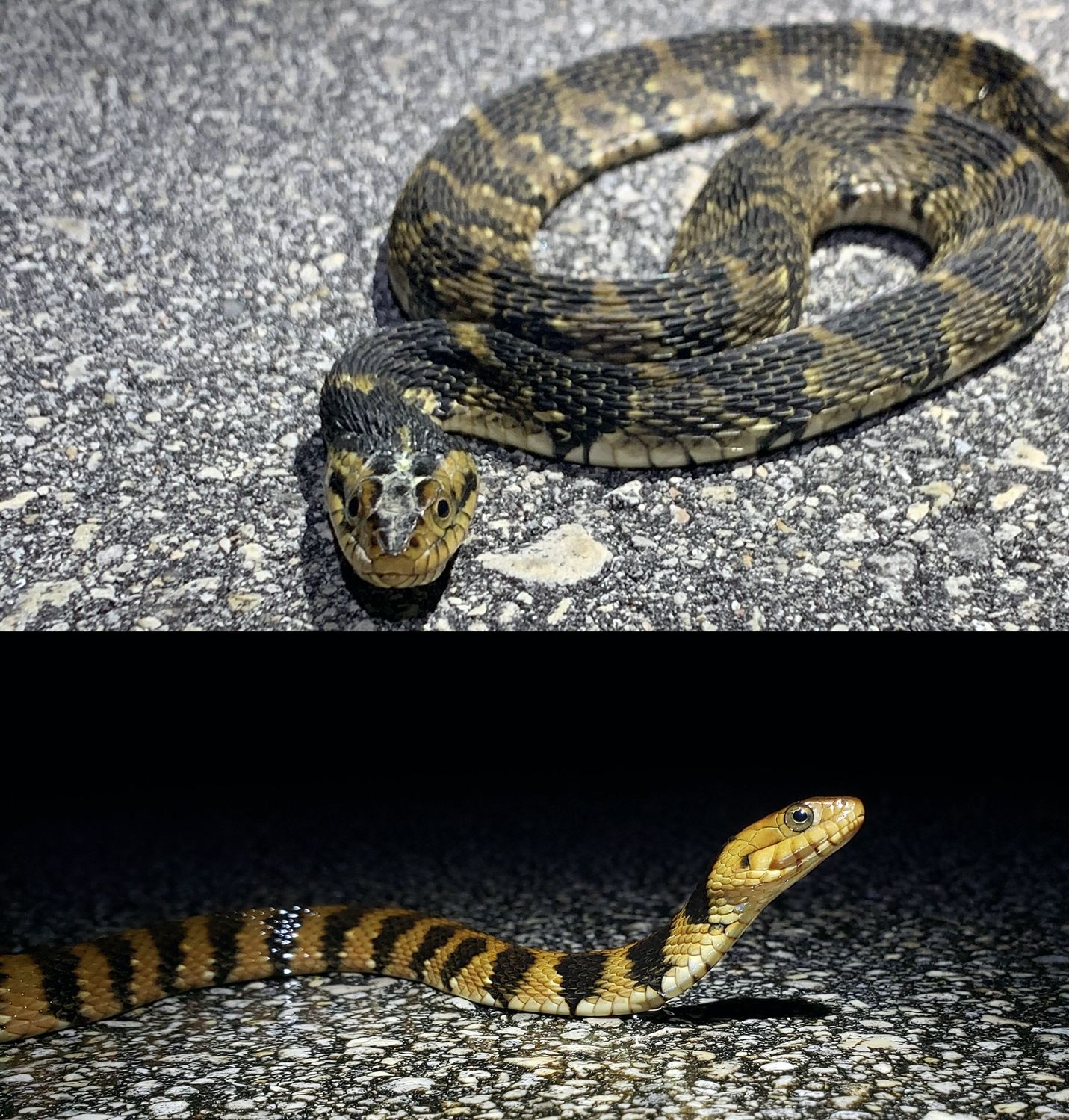
Credit: Bryna Daykin and Jenna Cole, UF/IFAS
Common in south Florida, this nonvenomous snake tends to have alternating dark brown-red bands across a lighter body; typically tan, gray, or yellow. However, their coloration and pattern can be highly variable. Unlike most non-native snakes of similar color, they can be distinguished by irregularly spaced dark belly scales and lack of a dark band through the eye.
Corn snake
Pantherophis guttatus, 1.5 to 6 ft (0.4 to 2 m).

Credit: Justin Dalaba, UF/IFAS
This nonvenomous snake has varying color and patterns. Unlike Burmese pythons, which are varying shades of brown, corn snakes typically have orange-rust colored bodies with bright orange or red blotches that are bordered in black. Adult ventral scales are usually checkerboard patterned, and juveniles appear similarly, but with duller brown-gray coloration.
How to Report
Immediately report sightings of all non-native snakes!
- Take a photo (clearly showing the body and coloration if possible)
- Note the location
- Call 888-IVE-GOT1 or report online at Ivegot1.org
For additional resources on snake identification and living with snakes on your property, visit:
https://myfwc.com/conservation/you-conserve/wildlife/snakes/
For more information contact
Frank J. Mazzotti
UF/IFAS Fort Lauderdale Research & Education Center
3205 College Ave., Davie, FL 33314
Email: fjma@ufl.edu
Acknowledgements
This publication was made possible by funding from the South Florida Water Management District and was originally created as additional reference material for the non-native large constrictor training program.